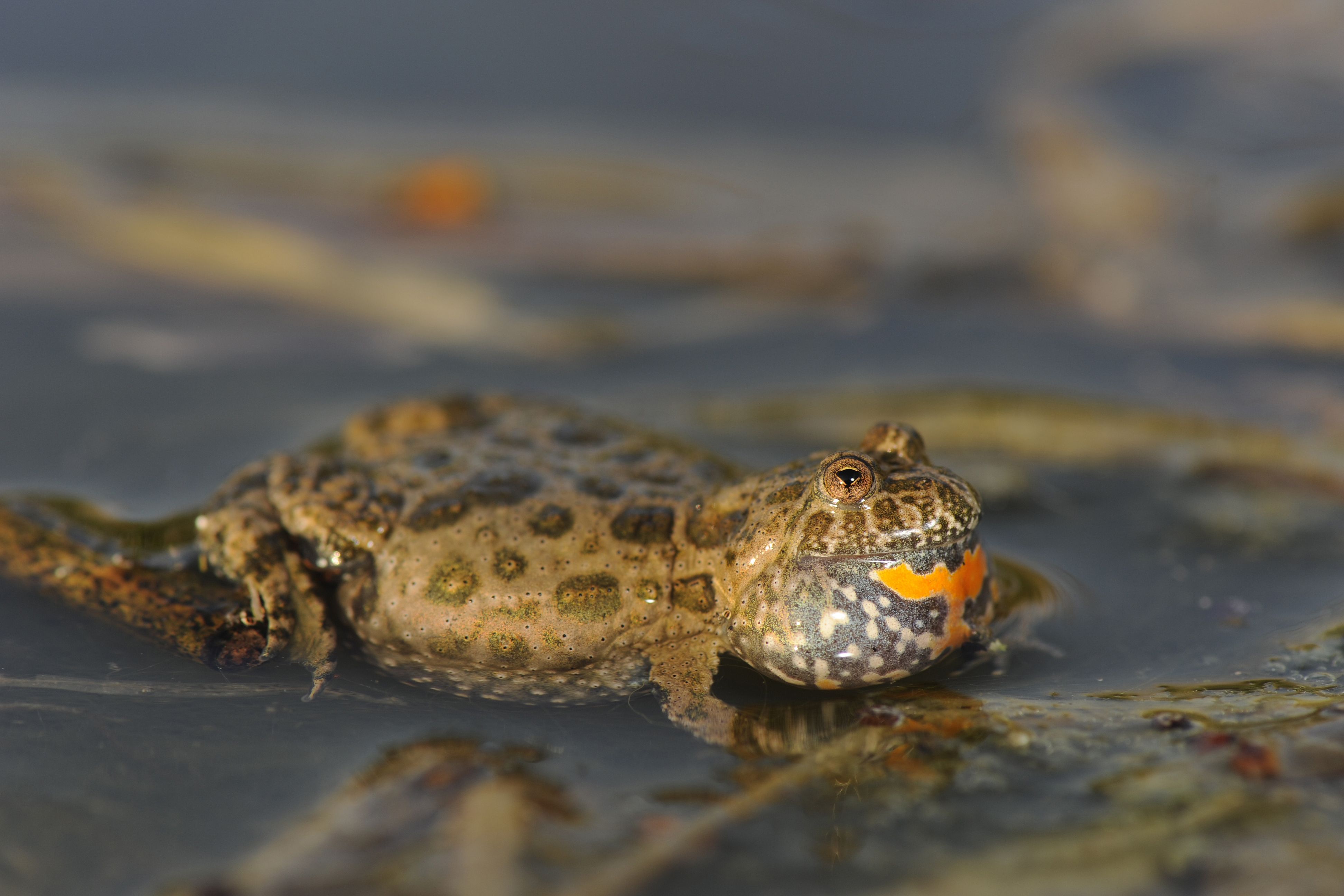An orange-red underside and heart-shaped pupils are the hallmarks of the Fire-bellied toad.
Description
The body length of males and females reaches only 4.5 (m) and 5.3 (f) centimetres respectively, although the Central European animals usually remain smaller. The upper side of the body is covered with flat tubercles with small black horn spines (not as distinct as in the Yellow-bellied toad), light to dark grey or grey-brown with dark spots. The underside, including the insides of the arms and legs, is dark grey to black with conspicuous orange to red spots, which sometimes only cover a fifth of the surface, but in extreme cases the majority.
Habitat
Co-occurrences with the Yellow-bellied toad within the same spot are ruled out in many regions, partly due to the different habitat requirements - exceptions include eastern Austria (e.g. Burgenland), the Czech Republic and Romania. Preferred habitats are sunny, vegetation-rich, fish-free shallow waters with strong seasonal water level dynamics (seasonal flooding); these are colonised from spring to autumn.
Breeding call
Similar to the Yellow-bellied toad, the mating call of the males consists of regular, melodic "uuh..uuh..uuh" sounds. It also has no throat vocal sac, which makes the calls relatively quiet. Males call at water temperatures from 13 to 34 °C. As the water temperature rises, the number of calls per minute increases from around 11 calls per minute at 13 °C to around 34 calls per minute at 33 °C. The pitch of the calls also increases as water temperature rises, while the duration of the calls decreases.
Example breeding call:
Wikimedia Commons Licence Jakob Jilg CC BY-SA 4.0 international
Source: The text on the description and distribution is an excerpt from Wikipedia ( https://de.wikipedia.org/wiki/Rotbauchunke) and is available there under the licence "Creative Commons Attribution/Share Alike". Status: 10 July 2023. The text on the call consists of excerpts from Wikipedia, adapted from "Die Amphibien Europas: Bestimmung, Gefährdung, Schutz" by Nöllert & Nöllert, Franckh-Kosmos Verlag 1992.

 DE
DE  EN
EN 









